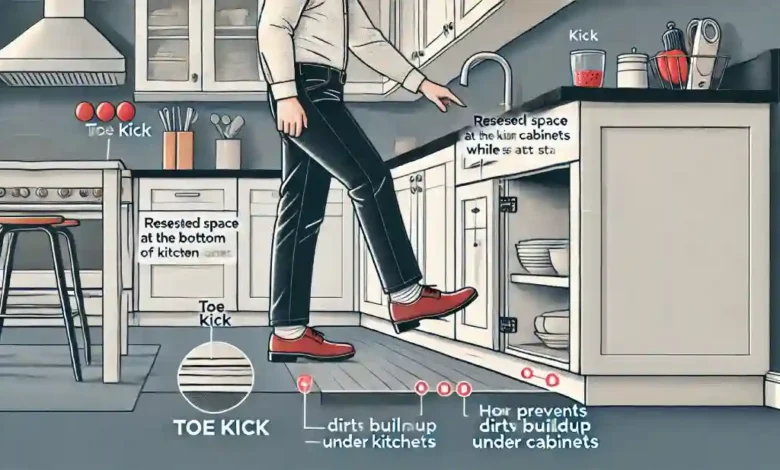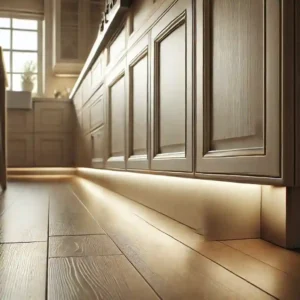Toe Kick: What It Is, Purpose, and Why Your Kitchen Needs One

Tiny details can significantly impact the kitchen design process. An effective toe kick is a small detail that often goes unnoticed but significantly contributes to convenience and practicality. If you’ve ever stood on the kitchen counter during food preparation or cooking, it’s likely that you’ve experienced a toe kick without realising its presence.
What Is a Toe Kick?
A toe kick is the area that’s recessed in the cabinet’s bottom, generally approximately 3.5 inches tall and 3 inches in depth. The idea behind it is to give enough space for feet so you are able to sit closer to the countertop and not lean forward in a way that is uncomfortable. This tiny, yet essential, aspect can be found on the kitchen cabinet, bathroom vanities, and some furniture that is built in.
Purpose of a Toe Kick in Kitchen Cabinets
1. Enhances Comfort While Standing
With no toe kicks, it is necessary to lean forward in order to work at your counters, putting stress on your back. This space is recessed, allowing you to stand comfortably, which reduces the strain of long prep sessions.
2. Improves Kitchen Ergonomics
Kitchens are built to be efficient and efficiency, and the kick toe helps improve posture and mobility. It allows you to sit in a comfortable manner at the counter and reduces discomfort when doing everyday tasks such as chopping cleaning, cooking, or washing.
3. Prevents Cabinet Damage
The toe kick can also act as a barrier to protect. If you don’t have it, your shoes and feet of yours could constantly strike the door of your cabinet. This can lead to scratch marks, dents and wear with time. It helps to maintain the style and long-term durability of your cabinetry.
4. Enhances Aesthetics
Although they are practical, toe kicks may add to the general design of the kitchen. Some homeowners prefer custom toe kick covers that include attractive trims and even LED lighting for an added the perfect accent.
5. Creates Hidden Storage Options
Many homeowners use toe kicks as storage options. Toe kick drawers are specially designed to be used to store flat objects such as cutting sheets for baking, cutting tables and even pet bowls, making the most of unutilised area.

Why Your Kitchen Needs a Toe Kick
If you’re planning to design a brand new kitchen or renovating the one you have, adding the toe kick can be the best option. Here’s why:
- The comfort: Standing for long durations while cooking is now more comfortable.
- Features: Reduces strain on your legs and back.
- Long-term durability: It protects the cabinets against scratch marks and scratches.
- Personalisation: The customisation can be made to be a seamless part of the style of your kitchen.
- Additional Storage: It can be transformed into a storage option that is discreet.
FAQs About Toe Kicks
1. What’s the typical size of a kick toe?
The average toe kick’s height is 3.5 or 4 inches with a thickness of around 3 inches.
2. What can I do to get rid of the kick of my toe from the kitchen cabinet?
Although it’s possible this is not advised, as it could affect your comfort and kitchen ergonomics.
3. Toe kicks can be utilised for storage.
Yes! Toe-kick drawers can be a fantastic method to make use of the storage space.
4. Are all cabinets equipped with a kicker?
Base cabinets in bathrooms and kitchens typically come with toe kicks. However, certain furniture-style or freestanding cabinets might not.
5. Do I have the ability to alter the appearance of my toe kick?
Absolutely! There is the option of adding decorative mouldings, LED lighting, or choosing a different colour for a unique look.
The toe kick might seem as if it’s a tiny design component; however, it is an important role in the comfort of your kitchen and its functionality. If you’re planning to build a brand new kitchen or replace the one you have, pay attention to this particular aspect; it can enhance the overall quality of your satisfaction.
